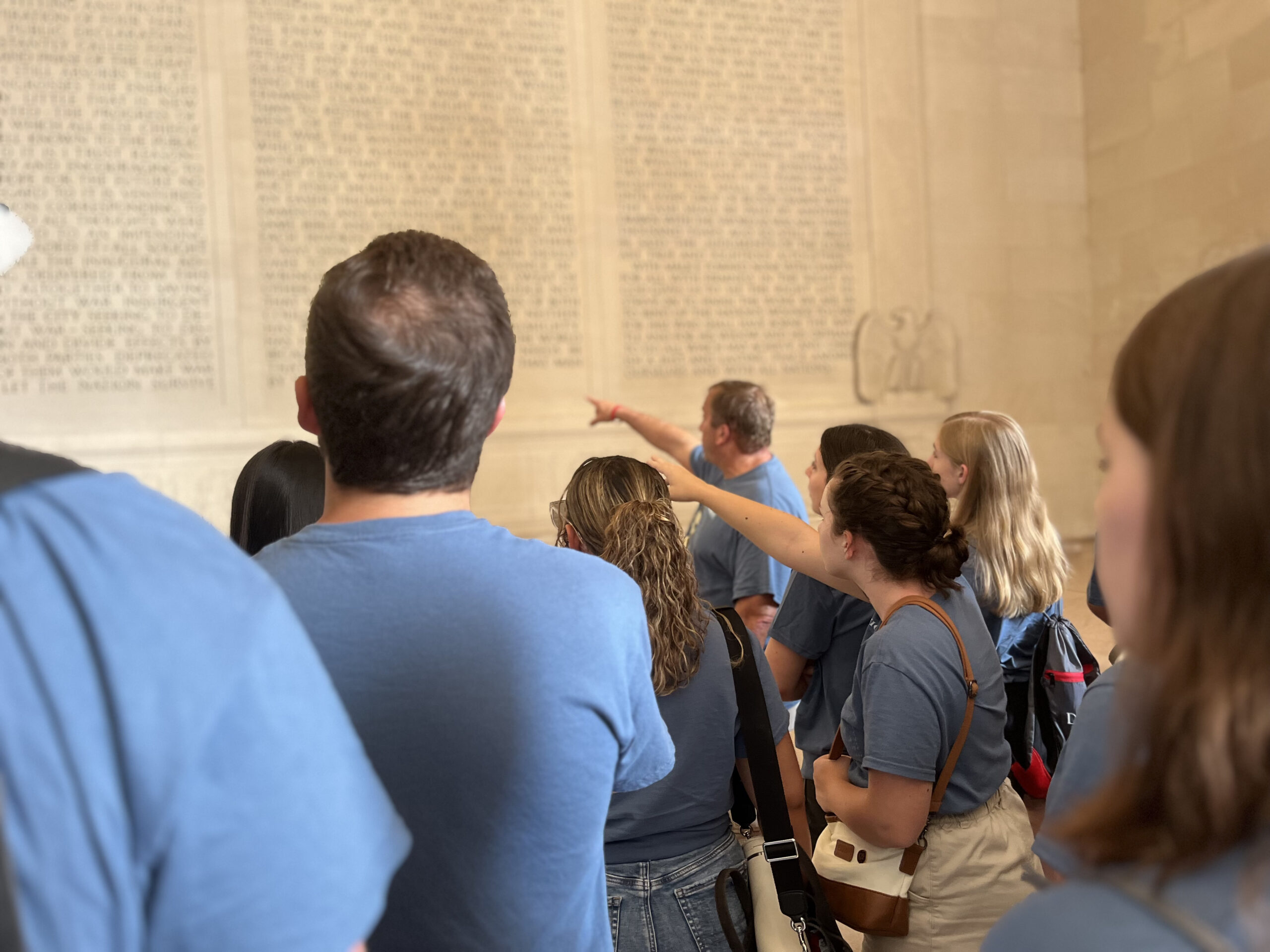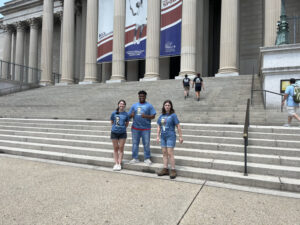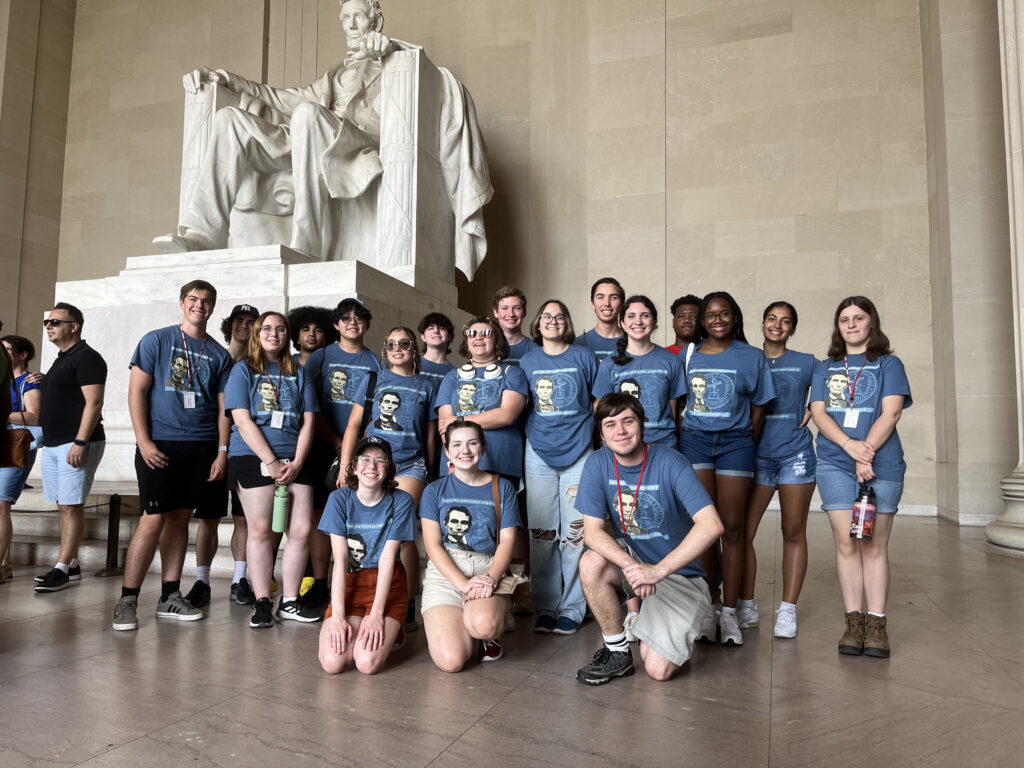Wednesday was the student’s field trip to D.C. They rose bright and early to catch the bus at 7:30. About two hours later they arrived at the Lincoln Memorial. Professor Pinsker described the Lincoln Memorial as a “temple to democracy” –this could not be more true. With flanking large white columns, the neoclassical building was captivating from the outside but once inside it was truly impressive. The students climbed the same stairs Martin Luther King Jr. had given his famous “I Have a Dream” speech and entered to find a marble statue of Lincoln. The students looked up in appreciation eyes trailing over the details of the statue. It was there that they discussed their previous readings of the “Gettysburg Address” and “Second Inaugural Address.”
They then ate lunch near Martin Luther King, Jr. Memorial and headed to the National Archive. The Archives house some of the original documents that the students have been pouring over these past two weeks. In the Rotunda for the Charters of Freedom, the students were able to see the Declaration of Independence, the Consitution, and the Bill of Rights. Students flexed their knowledge by pointing out specific sections of the Constitution and relayed their relevance to slavery. The students also attempted to identify the framers of the Constitution on the rotunda’s mural. In other exhibits, they learned about important court cases that have shaped the history of our nation. Some students then headed to the Archive’s gift shop in hopes of acquiring mementos of their trip. Two students quickly found figurines of Lincoln and Douglass which they used to boast about their upcoming debate. The competition was fierce.
The students also visited the Smithsonian’s National Museum of African American History and Culture. They began their exploration of the museum in an elevator which as it descended moved back through history. Once on the lower level, the students learned about the history of African Americans from 1400-1877 detailing their enslavement and their fight for freedom. This exhibit reinforced what the students had already learned in their lecture but it also provided a different lens that centered the voices and perspectives of Black Americans. It was so powerful that a couple of students are already planning their next trip. Many students also expressed that they found the Cultural Gallery dedicated to African American contributions to the arts their favorite part of their trip. The students then headed to the Emancipation Memorial where they discussed symbolism, Frederick Douglas and his thought on Abraham Lincoln. After dinner, the students headed back to Dickinson.




Leave a Reply